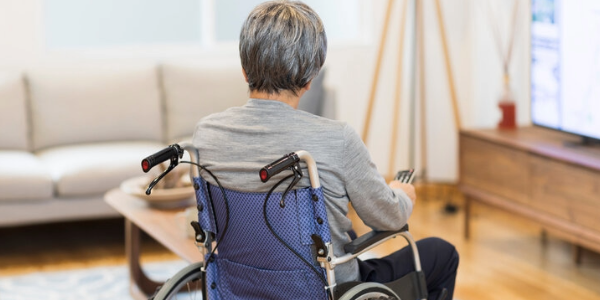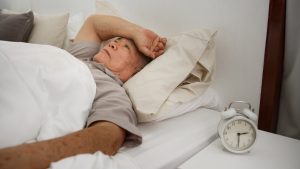Insomnia is a significant health and quality of life problem for older adults, with up to half of all adults over the age of 65 suffering from symptoms of insomnia. In a new study, researchers from Penn State College of Health and Human Development and Taipei Medical University analyzed data from older adults in the United States over a five-year period. They found that both a higher incidence of insomnia symptoms and a higher use of sleep medications were associated with a higher risk of disabilities one year later.
For each year that a person experienced an increase in insomnia symptoms, their risk of developing a disability in one area of their daily life increased by 20%, according to the researchers. A similar risk was associated with increased use of sleeping pills. People who regularly suffered from insomnia symptoms and took sleeping pills had the highest risk of disability that affected their daily activities.
Extensive Data Analysis
The results of the study, recently published in the journal Sleep, show how important it is to treat insomnia properly, according to the researchers. “When we examined the link between disability, insomnia and the use of sleep aids, we found that older adults who took more sleep aids or had more severe symptoms of insomnia developed a more severe disability more quickly,” said Orfeu Buxton, Elizabeth Fenton Susman Professor of Biobehavioral Health at Penn State University, co-funded lecturer at the Social Science Research Institute, and co-author of the study.
The researchers analyzed data from 6,722 participants in the National Health and Aging Trends Study (NHATS), a national sample of Medicare beneficiaries over the age of 65. The team used more than 22,000 individual observations from the first five data collection waves conducted between 2011 and 2015. The NHATS data included annual measurements of disability data using a validated questionnaire. The questionnaire included questions about self-care activities such as dressing, eating, using the toilet, and showering. Questions were also asked about activities such as getting up, moving around the house, and leaving the house.
To quantify the relationship between these variables, participants’ data were measured using an established numerical scale for disability. For each self-care activity, participants were classified as “fully capable” of performing the activity independently, “at risk” of disability if they used aids, limited their participation in the activity, or had difficulty with the tasks, or “in need of assistance” if they were unable to perform an activity without help. The “fully capable” rating was scored as one point, “at risk” as two points, and “needs assistance” as four points, with higher scores representing a greater degree of disability.
According to a previous study by other researchers, each increase in the total score by two or more points represented a clinically significant degree of disability in terms of self-care or mobility. The NHATS data included five frequency levels for both insomnia symptoms and sleep medication use: never, once a week, some nights, most nights, and every night. “Never” was scored as one point, and each level was scored as one additional point until “every night” was scored as five points. With each level of increase in the frequency of reported insomnia symptoms, the disability level increased by an average of 0.2 points in the following year. With each level of increase in the frequency of reported sleep medication use, the disability level increased by an average of 0.19 points in the following year.
How Insomnia and Sleep Aids Can Contribute to Disabilities
“These findings suggest that both insomnia and sleep aid use may contribute to disability,” said Tuo-Yu ‘Tim’ Chen, assistant professor in the Global Health and Health Security Program at Taipei Medical University in Taiwan and lead author of the study. As an average example, these figures suggest that an older adult who has increased their use of sleep aids from ‘never’ to ‘every night’ over a five-year period is likely to develop clinically significant disability. At the individual level, the risk cannot be predicted as accurately, but if an older person has sleep problems and/or takes sleep aids over a long period of time, the likelihood of disability is very high. According to an earlier study by the same research team, sleep aids increase the risk of falls in older people. Buxton suspects that falls are an important reason why sleeping pills are associated with higher levels of disability.
Many studies have shown the physical, psychological, and emotional damage that insomnia can cause, according to the researchers. The link they found between insomnia symptoms and disability confirmed their hypothesis. Since both insomnia and sleep aids can contribute to disability, older adults need to treat their insomnia safely and effectively, according to Soomi Lee, associate professor of human development and family studies at Penn State University and co-author of the study.
Insomnia can affect a person’s quality of life both directly and indirectly. Older adults who suffer from insomnia or take sleep aids should talk to their doctor about their sleep. When doctors are aware of sleep problems, they can review their patients’ medications to ensure that no interactions with other drugs are causing insomnia. Doctors can also refer older adults to facilities that treat insomnia more safely than with medication.
Cognitive behavioral therapy, which helps people recognize and change patterns of thinking and behavior, is a safe and effective treatment for insomnia, according to the researchers. “Many older adults believe that sleep problems are a natural part of aging, but they are a real problem that needs to be addressed,” Lee said. “And this problem is unlikely to improve unless those affected talk to their doctor about it. There are not enough sleep clinics, especially in rural areas, so older people may have to advocate for themselves to get appropriate treatment.”






